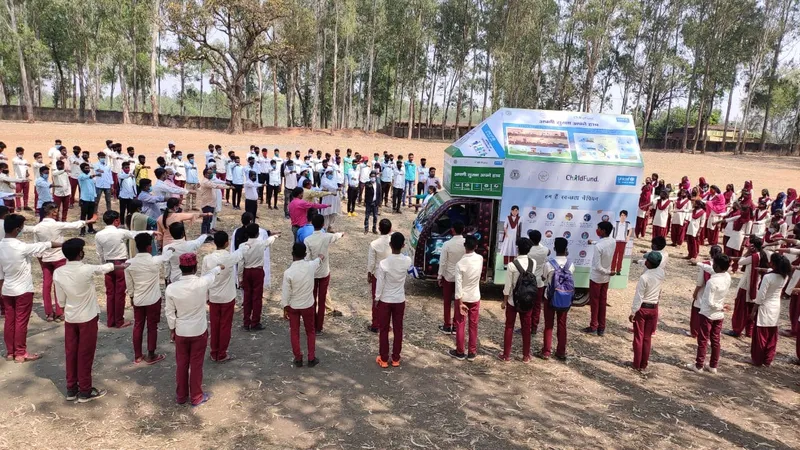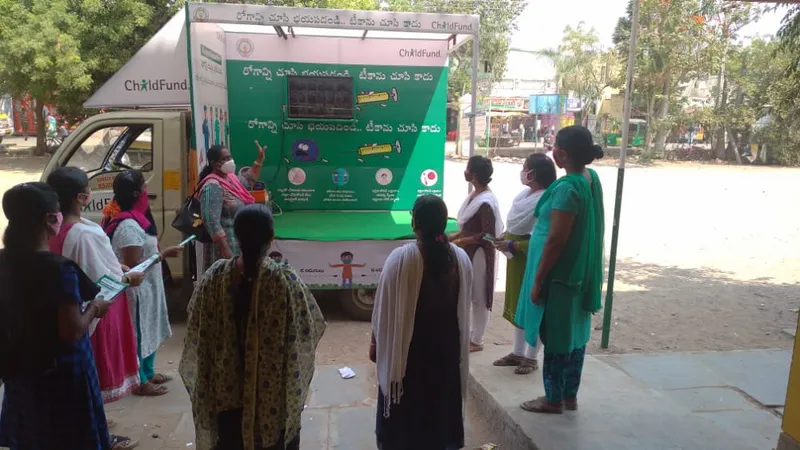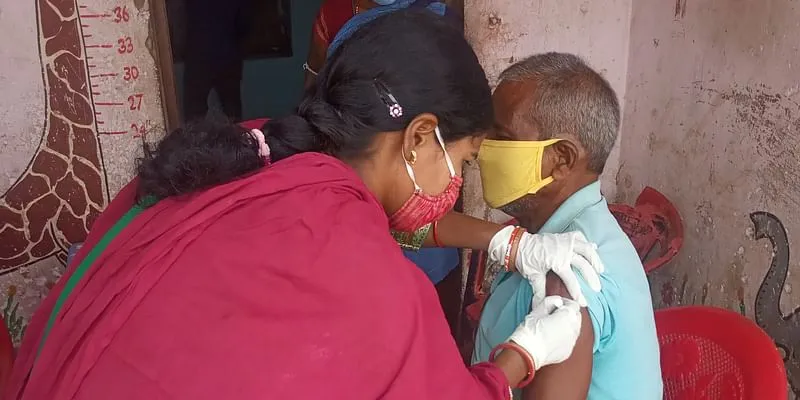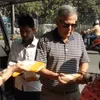[COVID Warriors] From essentials to vaccinations and more, how ChildFund India is fighting second wave
ChildFund responded to the COVID-19 crisis in India, which left many children vulnerable, by providing medical kits, food baskets, and psychosocial support.
ChildFund has been working with underprivileged children, youth, and families from some of the remotest areas (mostly rural) of India since 1951. It is now slowly expanding its focus to include urban poverty, where child protection issues and violence against children are prevalent.
Every year, the NGO reaches about four million people from 3,200 communities in 85 districts across 15 states in India, through its long and short-term programmes.
"We provide comprehensive support to children from their conception until they reach 24 years of age by integrating health, nutrition, sanitation, gender equality, disability, education, skill training, livelihoods, child protection, and humanitarian relief work," Rama Rao Dammala, Senior Specialist - Disaster Risk Management, ChildFund India, tells SocialStory.
ChildFund's emergency response is guided by a child-centred approach and ensures vulnerable children and their families/communities are protected from further harm. Its emergency responses provide protection and education for children, as well as restore life with dignity of the affected families.

The hygiene campaign conducted in Jharkhand where the students took a safety and hygiene pledge to battle the pandemic.
Medical support during the pandemic
"During the first wave of COVID-19, we reached out to 1.5 million people, providing them with proper information, relief material, livelihood recovery opportunities, psycho-social support, and necessary medical aid," says Rama.
Now, to fight this second wave, ChildFund India plans to reach at least 10 million people by providing protective items to frontline workers, vaccination support, food, hygiene, and psychosocial support to the communities, and medical supplies to Primary Health Centres (PHCs) and Community Health Centres (CHCs).
It has distributed medical supplies to over 40 primary health centres and community health centres in semi-urban and rural areas of India. The medical equipment includes oxygen concentrators, masks, non-rebreather masks, BiPAP machines, simple oxygen masks, and pulse oximeters.
Other medical essential items and safety equipment have been provided to 3,000 frontline workers, including healthcare workers, ASHA workers, ANM workers, and other health workers. It is also providing them with oximeters, glucometers and thermometers, aprons, reusable masks, and gloves and reusable face shields.

ChildFund India's mobile van that creates vaccination awareness
"While the vaccination is critical in saving lives, rural people have a lot of hesitation towards it. We are sensitising and providing appropriate information in such communities across the country," says Rama.
The vaccination campaign, which began in March, came to a halt due to the restrictions imposed to navigate the challenges of the second wave.
"We will resume the campaigning in the second week of June if things open up. The aim is to reach out to at least one million people, including children," he adds.
The ChildFund's field team design vans with relevant IEC (information education communication) material and speakers that play jingles aimed at sensitisation. It plans to organise vaccination camps in close collaboration with the local health system and Panchayats.
Rations and activity kits
While the government is supporting migrant workers' families with items like rice, ChildFund supports them by providing them with other items like cooking oil, pulses, salt, sugar, spices, among other essential food items through the Food Basket initiative.
During the first wave, the NGO claims to have supported 35,655 families with food baskets that included staple food such as rice and wheat. This time, ChildFund is targeting around 30,000 families, and has supported over 2,000 families so far.
The hygiene kits have five to six items that help in maintaining COVID-19 appropriate hygiene behaviour – soaps, masks, disinfectant liquids, detergent powders, etc. Over 2,000 families have been supported with the same in the second wave.
"Psychosocial support is also being arranged for children through inter-generational coping and learning activities. The NGO has supported children through activity kits to keep them engaged at home with different creative exercises and stories," says Rama.
Additionally, ChildFund's community-level volunteers are hosting neighbourhood classes. These volunteers are trained on how to conduct short sessions with 5-6 children. They conduct exercises and activities while ensuring that COVID-appropriate behaviour is maintained.
Mobilising the community
So far, the NGO is operational in over 3,000 villages, of which 85 percent have ChildFund officials present who help in reaching out to the communities. It has established community-level structures like Mothers' Groups, Youth Groups, and Adolescent Girls Groups to ensure the sustainable impact of its efforts.
"Our long-term relations with the community leaders and local authorities, and community mobilisation helped us in reaching out to these people," Rama shares.
In terms of funding, the NGO claims to have mobilised and invested about Rs 7.2 crore into its response activities amid the second wave alone and plans to mobilise Rs 15 crore in total. It also diverted its internal resources to support COVID-19 response activities.

Vaccinating an elderly man through one of the campaigns
Its efforts have received support from donors such as Project HOPE, ChildFund Alliance countries like Sweden, New Zealand, etc., other local corporates, and generous individuals.
"In the beginning, it was truly disheartening to see the patients in the OPDs, however, we provided the equipment and we recently followed up with them and I am very happy to share that most of the hospitals where we had given equipment, most of them have reduced the caseload by 70-80 percent. That was a big relief for us," Abhishek Toppo, Specialist Programmes, Madhya Pradesh, ChildFund India.
Challenges and the way forward
Rama says that the restrictions to the movement due to lockdowns and COVID-19 protocols have affected the overall response work. "In addition, procurement of materials has been a challenge as the availability has been a problem in this time of crisis," he says.
"Whenever we carry out the activities, the team on the ground is told to never compromise on their safety and follow all the guidelines and protocols properly. However, the team is passionate and have been working tirelessly throughout the pandemic," he further shares.
According to Aruna Kathi, Specialist Program, Telangana and Andhra Pradesh, ChildFund is focusing on pediatric care as “reports have suggested that the third wave could be more harmful to children”.
It also plans to mobilise people at the Panchayat level so that they can come there and get the information and register for vaccination.
ChildFund is also collaborating with relevant stakeholders at the state, district, sub-district, and Gram Panchayat level to implement the plan effectively.
"We want to work closely with frontline workers and the local health delivery system (ASHA and A&M workers) to deliver the vaccine to people at the village level," says Rama.
Edited by Saheli Sen Gupta

![[COVID Warriors] From essentials to vaccinations and more, how ChildFund India is fighting second wave](https://images.yourstory.com/cs/5/98c65090592f11ea9f62339ce853ca75/Imagef052-1623083730836.jpg?mode=crop&crop=faces&ar=2%3A1&format=auto&w=1920&q=75)

![[COVID Warriors] How Vrikshit Foundation is aiding the underserved during the pandemic](https://images.yourstory.com/cs/5/98c65090592f11ea9f62339ce853ca75/Imagepwzq-1622785393979.jpg?fm=png&auto=format&h=100&w=100&crop=entropy&fit=crop)
![[COVID Warriors] This NGO is caring for children who lost their parents to COVID-19](https://images.yourstory.com/cs/5/98c65090592f11ea9f62339ce853ca75/Imagewkiq-1622653296824.jpg?fm=png&auto=format&h=100&w=100&crop=entropy&fit=crop)




